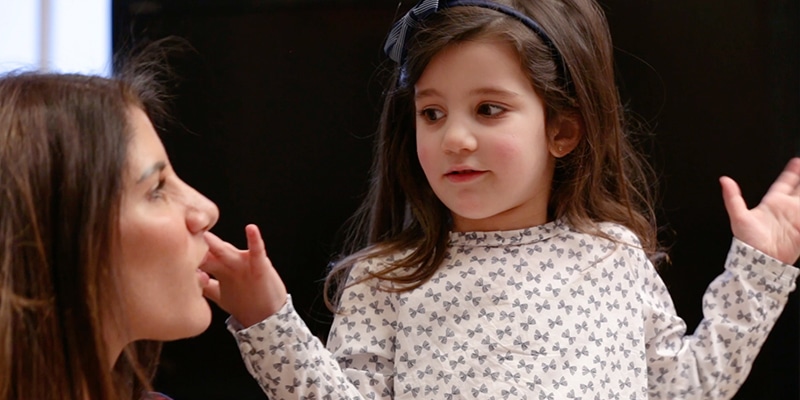MED-EL
Published Dec 05, 2018
Rehab At Home: Why Should I Sing With My Child?

Today’s Rehab At Home post is about songs and rhymes. Adding songs and rhymes to your daily routines is a fun and easy way to support your child’s listening and language learning! And research suggests that music can improve listening and oral language development, and improve attention and memory.
What Should I Sing With My Child?
You could sing lullabies, nursery rhymes, traditional children’s songs, or made up songs! Sing songs and rhymes about what you are doing, or about the pictures, toys and books you are looking at with your child. For some examples of the kinds of songs you can sing together, check out Mia and her mum singing in the video below.
Why Should I Sing With My Child?
By helping your child to listen to and engage with songs, you will build their listening skills, and their language skills as a whole.
Singing…
… can help with sequencing and auditory memory. As children practice the same songs over and over, they practice recalling longer strings of information and learn the order in which they go together. This will help to extend their auditory memory—their ability to recall and sequence information. Sequencing and auditory memory are important skills for following directions, telling stories, and reading comprehension.
… facilitates learning language better than any other method. Songs and rhymes introduce children to words and more complex sentences that may not be used in everyday speech. Songs and rhymes pair repetitive language with an enjoyable melody, helping the brain to remember new words, word endings and sentence structures.
…can support your child’s literacy skills through songs that are rich in rhyming and alliteration. Many songs contain words in a phrase or sentence that begin with the same sound, for example “Miss Mary Mac all dressed in black”.
How Should I Sing With My Child?
Most importantly, make it fun! You can sing just using the words, add the associated actions (such as the spider climbing or the rain falling in “Incy Wincy Spider”) or sing the words and clap along with the beat.
Match the volume, pace, and voices in your singing with the story of the song. For example you might :
- sing more softly when singing about a mouse
- sing more quickly if you are singing about marching and using faster actions
- sing male parts of the song in a deeper voice
Encourage listening and spontaneous language use with “auditory closure” in familiar songs. This is where you sing the first part of the verse or line, and encourage your child to finish it off. It may take time for your child to learn what you want them to do. Model this for your child by getting a sibling or partner to finish the song line first. And be sure to use songs which are well known to your child!
Row, row, row your boat gently down the stream. If you see a … (crocodile)
Don’t forget to … (scream!)
When Should I Sing With My Child?
Sing with your child every day! You can use this strategy to promote your child’s listening and language skills anywhere and the best part is you don’t need any toys or resources.
Songs and rhymes benefit children of all ages. You can build the groundwork for developing your child’s listening skills with songs even before they begin to speak.
Singing lullabies, while cuddling and rocking rhythmically, will allow your child to become familiar with your voice and the rhythm of your language. As your child grows older, don’t stop singing. Expand your repertoire of songs and rhymes, use more challenging words and tunes, and encourage your child to join in!
Want more from Rehab At Home? Check out all the videos on our Rehab At Home intro page.
Find out more about how cochlear implants work and how they could help you or your child.
MED-EL
Was this article helpful?
Thanks for your feedback.
Sign up for newsletter below for more.
Thanks for your feedback.
Please leave your message below.
Thanks for your message. We will reply as soon as possible.
Send us a message
Field is required
John Doe
Field is required
name@mail.com
Field is required
What do you think?
MED-EL


